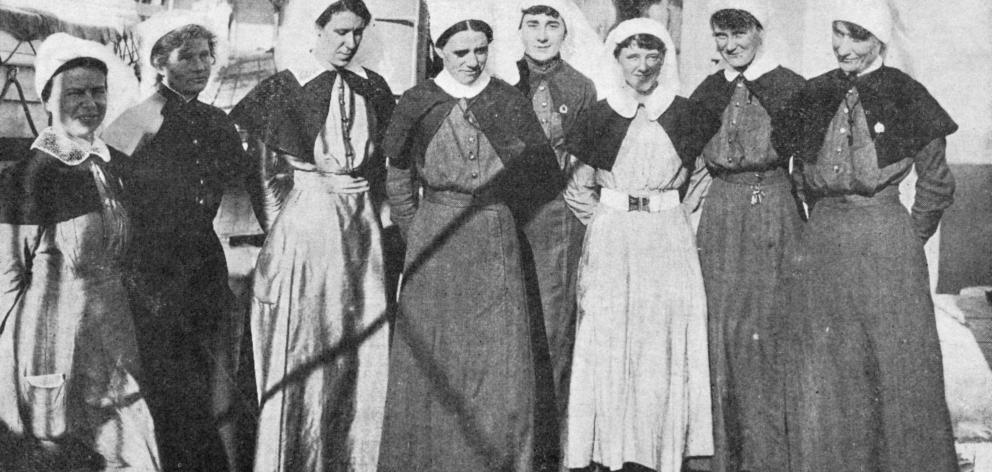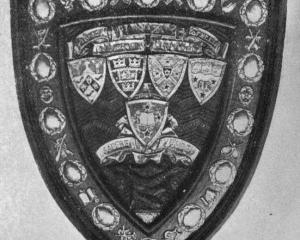
There was a numerous body of relatives and friends of the returned soldiers to meet them, and as most of the invalids have benefited wonderfully by the sea voyage, their reception was one of gladness and thankfulness.
His Excellency the Governor (Lord Liverpool) was on board, having joined the ship at Lyttelton, and Colonel Collins, C. M.C., also came to Port Chalmers with her. An official welcome was extended by the Mayor of Port Chalmers (Mr T. Scollay), who boarded the vessel on her arrival. The arrangements made by the local military authorities for getting the men to Dunedin worked excellently. The train, to which was attached a hospital van, was shunted down alongside the hospital ship, so that the men had no difficulty in getting into the carriages, and the cot cases were easily borne to the Red Cross carriage. The train left Port Chalmers at 9.35, and arrived at Dunedin at five minutes past 10, with Captain Myers in charge. There was a big crowd at the station. The train was run down to the southern end of the platform, and a barricade was used to keep people back from the north end, while the exit at the south was kept clear to the street, little difficulty being experienced in this by reason of the good sense and good behaviour of the people. The High Street School Fife and Drum Band played as the train steamed in, and later went down to the Early Settlers’ Hall and supplied music there while the north and south men were being entertained. The Mayor (Mr J. J. Clark) was present, and also Messrs J. Horn and C. Speight, representing the Soldiers’ Welfare Committee of the Otago Patriotic Association.
• An outline of the intentions of the National Efficiency Board in regard to female labour is contained in a statement made by Mr J. H. Gunson, the Auckland member of the board.
"The board, at an early date," said Mr Gunson, "will probably prepare a register of all women in the dominion, with a view to the classification of those not already engaged in some useful occupation. In other countries the dilution of labour, and, in fact, in many instances the entire replacing of it, by the employment of women has been carried out on a large scale. With the continual drain of our manhood from the essential occupations and industries the time is fast approaching when the women of the country will be able to render very much more effective service to the state than in the past. The details of how the necessary organisation can best be arranged will claim the early consideration of the Efficiency Board."
• The Public Health Department is issuing a circular to the hospitals, sanatoria, and convalescent homes, both civil and military, throughout the dominion, calling attention to the very good results obtained by a method of treatment adopted by Dr Herbert (the medical officer in charge of the Rotorua Sanatorium for Sick and Wounded Soldiers) to assist soldiers who have been paralysed to regain the use of their limbs. The treatment follows somewhat on the lines of that adopted in cases of infantile paralysis. Strong rubber bands are so adjusted as to prevent stretching of the muscles, while at the same time allowing the free use of the paralysed limbs. The treatment has already proved most beneficial, and Dr Herbert has furnished a valuable report on the subject, illustrated by a fine series of photographs, showing the various methods of adjusting the rubber band to different limbs. — ODT, 12.3.1917.
• COPIES OF PICTURE AVAILABLE FROM ODT FRONT OFFICE, LOWER STUART ST, OR WWW.OTAGOIMAGES.CO.NZ












